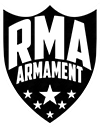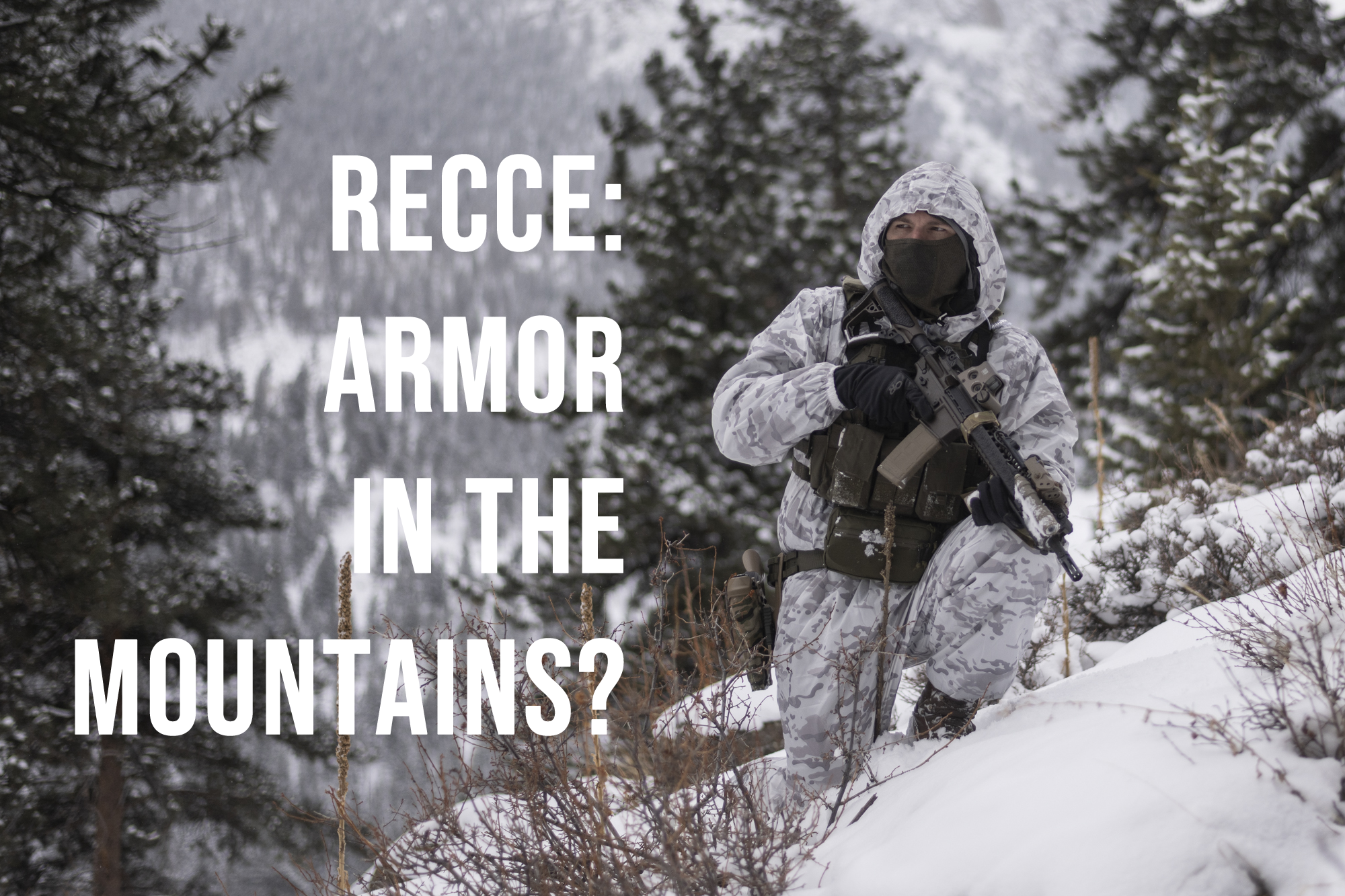RECCE Body Armor: Does it make sense?

Body armor solutions for RECCE-oriented missions are often overlooked. Somewhere between movement to contact and reconnaissance, body armor comes into play. Since RECCE is popular again, let’s examine some of the concepts and principles that can apply to a situation at home.
While many missions that are strictly recon leave body armor behind, it again depends on your mission profile.
Missions that are strictly reconnaissance-oriented largely involve infiltration, intelligence gathering, HVT identity confirmation or target marking, and exfil without detection. As such, many operators choose to forego armor in the hopes that less weight and bulk will result in a lighter presence on the landscape, lower profile, and more nimble movement and speed. But if your mission profile involves any kind of urban environment or wildland/urban interface, you might be considering a totally different kit than wildland-only loadouts. How can we apply these thought processes to the CONUS civilian world?
BAMCIS!
Military veterans will be familiar with the acronyms for mission planning and organization such as BAMCIS and SMEAC. The OODA loop is a separate acronym, but is largely integrated into force protection considerations in BAMCIS that revolve around risk/reward calculations.
Without diving into the deep specifics for those unfamiliar, how can we apply these basics to what we’re wanting to accomplish with RECCE kit and how are we choosing our components? Most people that are looking to defend their homes shouldn’t view RECCE gear or other tacticoolness as a plan in and of itself.
Begin Planning
What are the goals of your mission? Why are you doing it? Like a company’s mission statement, it may seem simple and obvious. But take seriously this stage of the task ahead, as it will define every other aspect of your mission’s orientation.
Who, What, When, Where, Why?
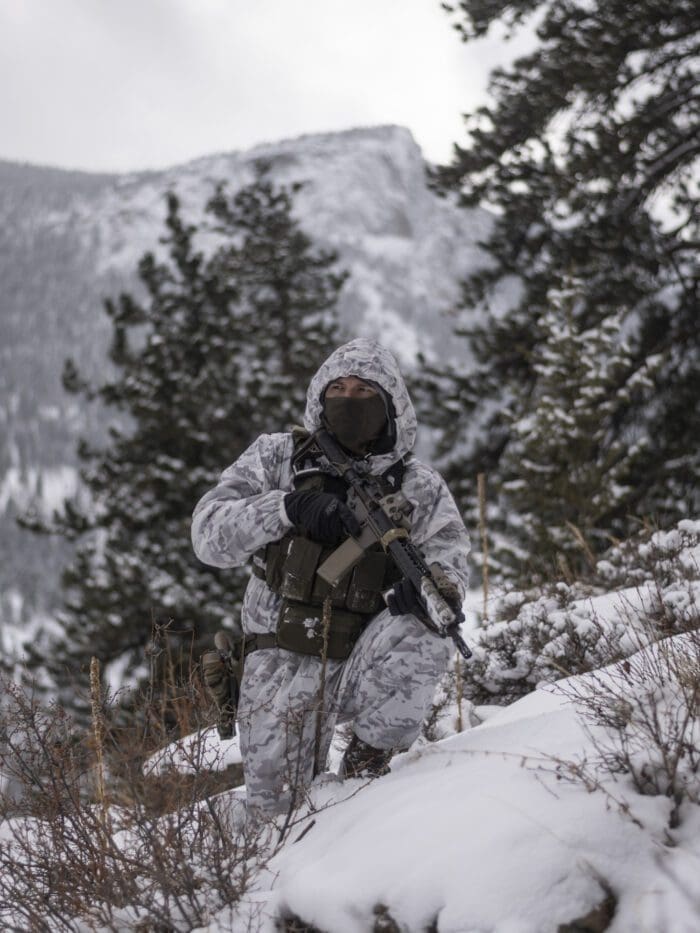 These are aspects we might perceive subconsciously, but are critical planning mechanisms for choosing equipment, routes, and more. The most important part of this section is ensuring that everyone is executing the same plan and understand their role in it. Two people thinking different things about the same idea is what results in missed catches in football and disastrous missions in wartime.
These are aspects we might perceive subconsciously, but are critical planning mechanisms for choosing equipment, routes, and more. The most important part of this section is ensuring that everyone is executing the same plan and understand their role in it. Two people thinking different things about the same idea is what results in missed catches in football and disastrous missions in wartime.
Be sure to look at all the variables involved that might give you any resistance beyond ‘as the crow flies’ movement. Weather, geographical terrain, human terrain (civil considerations), and more will all play a role in your first determinations. Then, modify your plan according to your target’s most likely course of action, strongest assets, critical weaknesses, and how you can exploit those intel advantages into a physical advantage.
If you think there’s a high likelihood you’ll receive small arms fire during the course of your mission and you’re operating in an urban or rural environment with limited escape routes or flat, open planes that offer your attacker the ability to engage you during your retreat, you might consider forgetting what Youtube tells you recce is, and pick up some body armor.
Arrange for Reconnaissance
Intel-gathering stages don’t have to take the form of military-style physical implementation. In fact, some of the most useful information you can use will be easy-to-find open-source intel. Humans tend to be social creatures, which means we often reveal much about ourselves that we might not consider to be information that could be used against us in some fashion. Macro-level data such as voting patterns, crime statistics, population size and density, and more can help you plan more effectively for what you can expect to encounter. Local social media groups can be revealing about individual opinions about events that directly impact you, and even profile image banners, tattoos, political yard signs, and items advertised for sale in your community can be indicative of the attitudes and opinions of your neighbors about you and your attackers. For example, you’ll go to prison for openly carrying a pistol in New York City and this would cause substantial alarm in your community if you were seen carrying. But in Arizona, nobody would even take a second look at you since the practice has been so normalized.
Reconnaissance in any form is designed to confirm or deny your presuppositions and allow you to make for any alterations to your plan before execution.
This step is also where you’ll be considering the tools at your disposal and whether they present a positive cost/benefit analysis to your mission. Flying a drone is fun and cool, but it’s vulnerable to small arms fire and can easily give away your position with all the noise it generates from the propellers.
Make Reconnaissance
Finally, we’re at the stage where we might typically execute a recce-style plan. Remember that recce isn’t just a bugout or emergency plan. Your best-case recce scenario is a fun hike in the woods. Recce TTPs can certainly assist in survival, evasion, resistance, and escape from a formidable and superior adversary, but it isn’t the end of what you should learn and consider.
Let’s look at an example of home defense that is dramatically different from military application.
A rural mountain home nestled on the slope of a wooded and rocky peak provides significant terrain advantages to the resident, but only if they identify their critical weaknesses, too. In the spirit of 2020, let’s assume a mob of rioters are heading toward this home with the explicit intent of assaulting and harming the homeowners and the police aren’t coming. Since this isn’t a burglary, we shouldn’t be thinking about tactics to use inside your house. If they’re in your house, you have already failed. Your plan should be based around keeping the mob at the greatest distance away from your structures that you can. That means that close-range small arms like a pistol or shotgun will do virtually nothing for you. You’ll need a rifle to protect yourself, and you should assume that someone in that mob has the same plan. Houses provide virtually zero ballistic protection from most firearms, and this is a situation in which lightweight rifle-rated body armor will serve you well.
Since most mountain areas in the United States are highly prone to wildfires, consider what you would do if they started one. It would be all too easy to start a fire somewhere upwind (a very common weapon in the rioter’s tool kit) and let it blow over to your house. So your plan needs to incorporate not just the possibility, but the almost inevitable outcome of leaving your home behind at some point in the fight.
Is your escape route designed to avoid both the fire and the combatant crowd? What location are you retreating to, and why? Do you have immediate safe access to necessary resources like food, water, and shelter? What about ammunition, communications, and transportation? Can you, your family, or friends penetrate your defenses with full knowledge of the landscape? Are you easily trackable during your movement away from your home? Which routes are enemy forces most likely to travel to attack your location? Which areas will allow them the most freedom of movement, which defilades will offer them the most cover and/or concealment, and how can you compromise each to create an advantage for yourself? Are your nearby communities predisposed toward friendship, hostility, or indifference to you or your attackers? Since traditional recon doesn’t make a lot of sense once they’re heading your direction, it’s best to play out these scenarios before they happen in your reconnaissance stage.
RECCE is the stage designed to scout out and test these concepts for your home defense plan in a civilian scenario. There are a million questions to consider, but Occam’s razor tends to allow many assumptions about your battle plan to play out in real life.
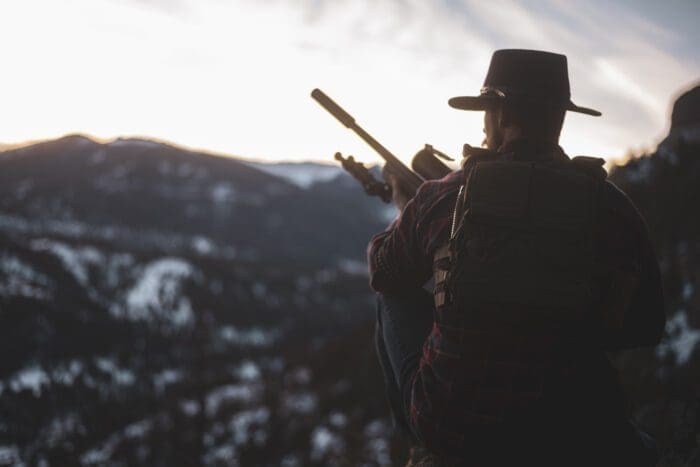
Creating Actionable Plans
In this mountain home scenario, we would explore both traditional and guerilla warfare tactics to manage an oncoming attack that is superior in numbers and possibly armed. Creating pre-set defilades with traps like punji sticks, tear gas, explosives, or other implements for your attackers will slow them significantly. Forcing them into an open space where they have no meaningful cover or concealment and away from these defilades presents a decisive advantage to your entrenched position and allows you to steer your attackers away from your escape routes and into fields of fire or other traps. Creating fear and uncertainty about utilizing cover and concealment will paralyze much of the enemy force that depends on the size and energy of the crowd to animate them to action. Compromising routes of travel by obstructing roads and trails will create attrition of the enemy force through thirst, hunger, injury, lack of motivation, and fatigue as well as slowing the entire force down. Remember that only a handful of agitators in any given crowd are true believers that will accept true consequences for their actions. Simple physical obstacles and fear of the unknown or negative consequences will force many in the crowd to abandon you for an easier target or just go home.
Should the worst happen and your home is overrun by enemy forces, your escape plan must involve the possibility that they seize whatever resources are not foot mobile with you. They may utilize these and pursue you with them, such as firearms and ammunition. Suddenly you’re in a scenario in the mountains where you’re taking fire likely within 200 yards. This is where lightweight rifle armor comes into play. Keeping yourself and your team in the fight during movement can be the difference between life and death.
Highly integrated (not necessarily minimalist) kit will serve you well in this role. While it’s tempting to go minimalist on weight and bulk, it’s important to remember that rough terrain, weather, and movement will take a toll on your equipment. High denier Cordura fabric construction of your gear will mean the difference between abrasion resistance and that cheap Amazon stuff shredding against trees and rocks. Additionally, take a practical look at what tools might be available to an enemy force. In military recce scenarios, many operators forego armor in favor of saving bulk and weight while moving over rough terrain because the military almost exclusively utilizes level 4 body armor due to the ever-present AP ammo threat from opposing forces. Whether you’re practicing infiltration to test your defenses, moving in close quarters through your structures, or moving to another rally point away from your home, you’ll want to consider the properties of your equipment that will help or hurt your tactics.
For example, you’re unlikely to see true armor piercing ammunition being used in conflict in most of the United States. While level IV armor will protect you from most AP ammunition strikes, consider utilizing level III or III+ armor instead. These plates are rated to protect you from most non-AP rifle fire that you might encounter such as 5.56, 7.62, M855, M855A1, or others depending on which plate you buy. The biggest benefit is that while you’re protected from most common rifle calibers, you’re also running extremely lightweight kit. Additionally, you’ll enjoy a higher threshold of round count protection per plate. Given that a movement away from your home to another location involves you turning your back to your enemy to hoof it, it’s worth considering that it only takes so much Kentucky windage to land relatively consistent hits.
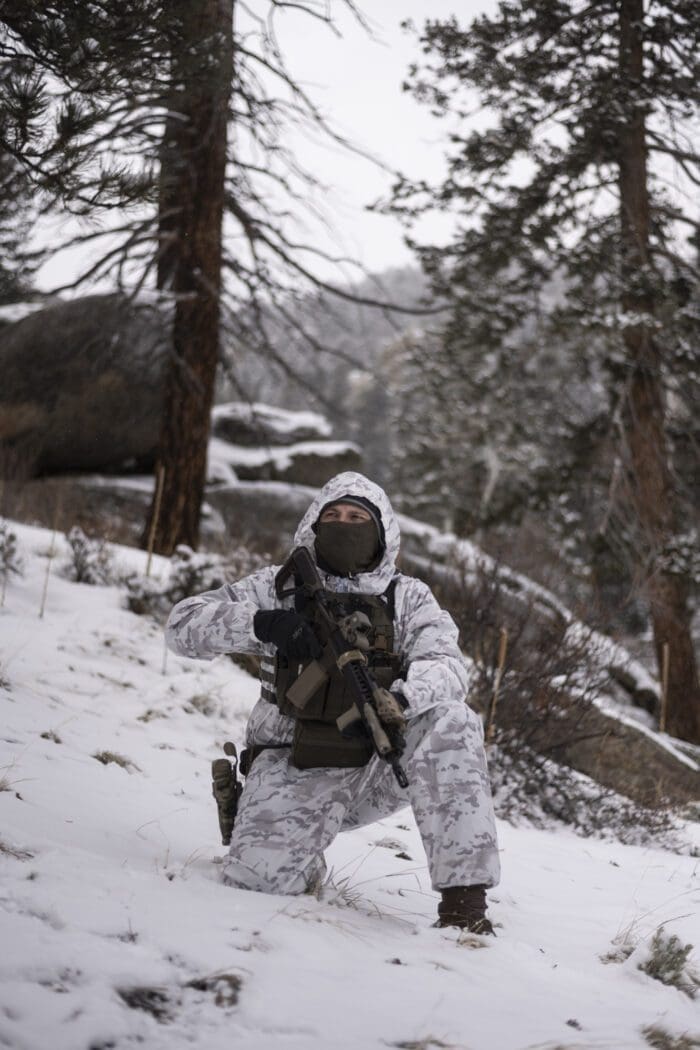
<<That’s me, and I’ve done the calculation on this and decided that my home at over 8,000 feet on the side of a mountain means our 1092 plates are perfect for my needs. Because I’m acclimatized to both elevation and weather and in reasonably good shape, I have a distinct advantage over an attacking force to begin with. Adding in lightweight armor means my kit won’t weigh me down should I be forced to move into my extremely steep backyard and climb a minimum of 1,000 feet to safety. (Trust me, I’ve tested it.) Every pound I save on my equipment means another magazine on my vest or belt, but I’m not surrendering my torso to enemy fire entirely.
Of course I also have a set of 1155 level IV body armor plates in case I have reason to believe an attacking force is bringing AP ammo to the fight. But given the energy loss over distance of M855A1 and my existing protection from M855 at only 25 yards, I’m fairly confident my 1092 multicurve set is the way to go for most situations. Including fully-loaded magazines, my entire vest weighs only 12 pounds and provides an extremely high level of protection, mobility, and camouflage in my environment.
Conclusion
Fully consider your possible inputs and outcomes from a combat or movement scenario before choosing your kit based on what the internet says is trending at the moment. Your situation is very likely different from whatever is being presented by your favorite Youtuber.
